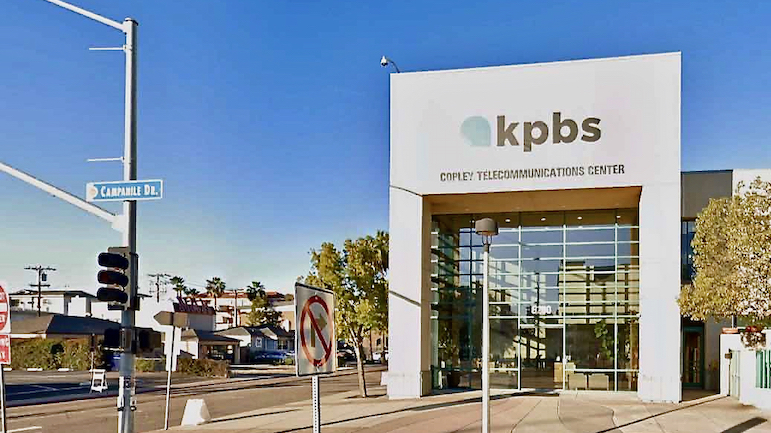Avoid the penalty — don’t lose sight of direct-mail acquisition
The Super Bowl is over. The boys of summer have just taken the field. And March Madness has only recently subsided. That can only mean one thing to a public media development professional. It’s budget time!
Many see this process as a battle more intense, more contentious, than any faced by athletes.
 Development professionals are asked year after year to bring in more money while spending less. Many chief financial officers are dealing with staggering declines in state, corporate and foundation support.
Development professionals are asked year after year to bring in more money while spending less. Many chief financial officers are dealing with staggering declines in state, corporate and foundation support.
As a result, some CFOs are trying to protect net revenue for the short term by drastically cutting — or even eliminating — their efforts to acquire new members through direct mail.
Some would say that is the equivalent of a football coach starting the team’s injured star quarterback in the first game of the season. While they may win that game, the move won’t help them win the championship.
For fundraising professionals who believe acquisition direct mail still belongs in their Fiscal Year 2013 Playbook, how can they respond when their CFOs pose the following frequently asked questions?
Q. What’s so great about mail-acquired donors?
While it’s true that mail-acquired donors, on the surface, may look like all your other contributors — similar ages, household incomes and interests — they actually make up an especially valuable segment of your membership.
According to John Mastrobattista, senior fundraising analyst at Blackbaud, direct-mail donors are approximately two to three times more likely to stay on your file after the first year, compared with pledge-acquired donors. (That is, about half will remain, compared with 15 to 30 percent for pledge-acquired members.)
In addition, mail-acquired donors are almost twice more likely than Web-acquired donors to renew the following year. (About half renew instead of just 25 percent to 30 percent.)
Mail-acquired donors are the foundation of a strong membership file. Development directors with well-balanced memberships, including mail-acquired donors, don’t panic when they don’t see a new Dr. Wayne Dyer or doo-wop pledge special coming soon, or when they are asked to pledge fewer days on-air, because they can count on their active members to continue supporting their station year after year.
Q. Why can’t we just increase the number of pledge days to acquire new donors?
It’s so tempting, isn’t it? Why pay for direct mail when we have the power of the airwaves to communicate with our donors? Pledge specials by Suze Orman and André Rieu generate new donors as well as much-needed immediate revenue. Why not grab a Target of Opportunity Pledge here, or add a weeklong pledge drive there? That will get us where we need to go, right?
Wrong. On average, public television stations spent five more broadcast days fundraising in 2011 than in 2006. Stations are relying more on prerecorded pledge breaks than ever before. While these canned pitches may seem to be an overworked pledge producer’s best friend, they often push donors toward larger donations and more expensive premiums. These prerecorded breaks could never meet the needs of all stations and the various levels of basic membership, so while national pledge breaks are big revenue boosters, they simply can’t communicate the mission and value proposition of every individual station. In turn, the focus on the higher giving levels tends to add members who are motivated more by the program’s offerings and less, perhaps, by an interest in your station’s ongoing mission.
Please don’t misunderstand me: On-air fundraising is a crucial part of a successful membership program. However, just like a diversified stock portfolio, the right choices are all about balance. Relying exclusively on on-air pledge as a source of donor acquisition will result in a startling decline in all key metrics: renewal rate, additional gift participation and lapsed recapture, just to name a few.
Q. Why not switch to email acquisition?
I am often asked whether fundraisers have found success with email acquisition. Not the vast majority of nonprofits. According to the Blackbaud 2011 donorCentrics Internet and Multichannel Giving Benchmarking Report, only 16 percent of new donors make their first gift online.
Think about your own giving behavior for a moment. Has an email ever prompted you to donate to an organization you’ve never supported before? Even if the email gets all the way to your inbox (which gets harder and harder for an e-solicitation to do), do you take the time to open the email, read it and respond to a charity you have never given to before? If you are like most people out there, the answer is no. The number of donors you can acquire through email pales in comparison to other techniques. Direct mail is the quickest and most cost-efficient way to build a large file of donors who will make ongoing contributions.
No doubt about it, online fundraising has indeed changed forever the way we communicate with — and raise money from — our members. It should be a part of any comprehensive development strategy. Email is a great tool for communicating with your donors. E-solicitations requesting renewal and additional gifts are becoming more popular, and the response is growing.
So don’t stop directing people to your website during on-air pledge drives. Keep printing your URL on all your direct-mail solicitations. Success comes from using all the tools in your toolbox. According to the Blackbaud 2011 donorCentrics Internet and Multichannel Giving Benchmarking Report, while only 3 percent of donors acquired through direct mail in 2009 gave an online gift in 2010, those who chose to give online made much larger gifts, and had more total value than those who gave only through the mail. Online gifts tend to be larger because they’re made by credit card, and credit card gifts generally are larger than those made by personal check. So continue to drive your donors to your website and keep asking for those online donations.
Q. Okay, acquisition mail is important. But we have a pretty tight year ahead. Let’s cut acquisition just for this year. Next year we will add it back to the budget. How bad can that be?
In a word — very. Many stations cut back on their acquisition direct-mail programs following the economic downturn in 2008–09, and are still trying to catch up. Here’s a typical example:
Year 1 — The station cuts its acquisition program, saves some money on mailings and ends the year with more net revenue than the previous year. The station celebrates their success over pizza!
Year 2 — As a result of reduced direct-mail acquisition in Year 1, the station has fewer donors in its active mail file. That means fewer people to solicit for additional gifts, fewer people to renew and fewer people to convert to monthly giving. And because a higher percentage of donors on the file were acquired through on-air pledge, the station can expect the response rate for these appeals (additional gift, renewal and sustainer) to decline. At the end of Year 2, the station has generated less net revenue then the previous year (and the year before that). No pizza party this year.
Year 3 — In addition to everything that happened in Year 2, the station also begins seeing eroding renewals from its appeals to lapsed members. Because more of the lapsing donors are the least likely to respond — i.e., on-air–acquired — the station can expect to see decline in lapsed members recaptured. At the end of Year 3, the station has less net revenue than the previous year’s, a shrinking active donor file and a staff that is longing for a stuffed-crust pepperoni pizza.
Q. How much should I expect to spend?
Determining how much you should spend in direct-mail acquisition comes down to your station’s goals. Do you hope to grow your membership file in the coming year? Do you want to invest just enough to maintain membership size this year?
In an average year, most stations mail to between 2.5 percent and 4.5 percent of households in their markets, and aim to spend between $30 and $45 to acquire each new donor through the mail.
Once you know your goals, you can build a plan that works toward achieving them. It is true what they say: There can be too much of a good thing. The goal is to find the perfect balance between mailing to your previous supporters and identifying new prospects — all while monitoring your cost of acquiring a donor.
Q. What kind of return can I expect?
Like everything else, your station’s results will depend on a variety of factors that are unique to your situation and your market. Factors in your control include the mailing geography, list selection, your station’s acquisition-mail history, market penetration and, of course, the effectiveness of your creative and the offer you make.
On average, stations are breaking even on the direct-mail acquisition costs in the donor’s second year on file.
True, acquisition direct mail is an investment, but it’s a critical one that will pay off in the long run.
So how do stations balance the need for net revenue with the long-term stability of the program? It’s not about how much you mail — it’s about how smart you mail. Are you mailing to the proper ZIP codes? Are you making the most of lapsed names on your file? Are you communicating the most effective message? Are you maximizing the performance of your net–revenue–generating programs?
Call a timeout. Open your playbooks. Create a game plan that gives you a winning season — not only this year but in the years to come.







